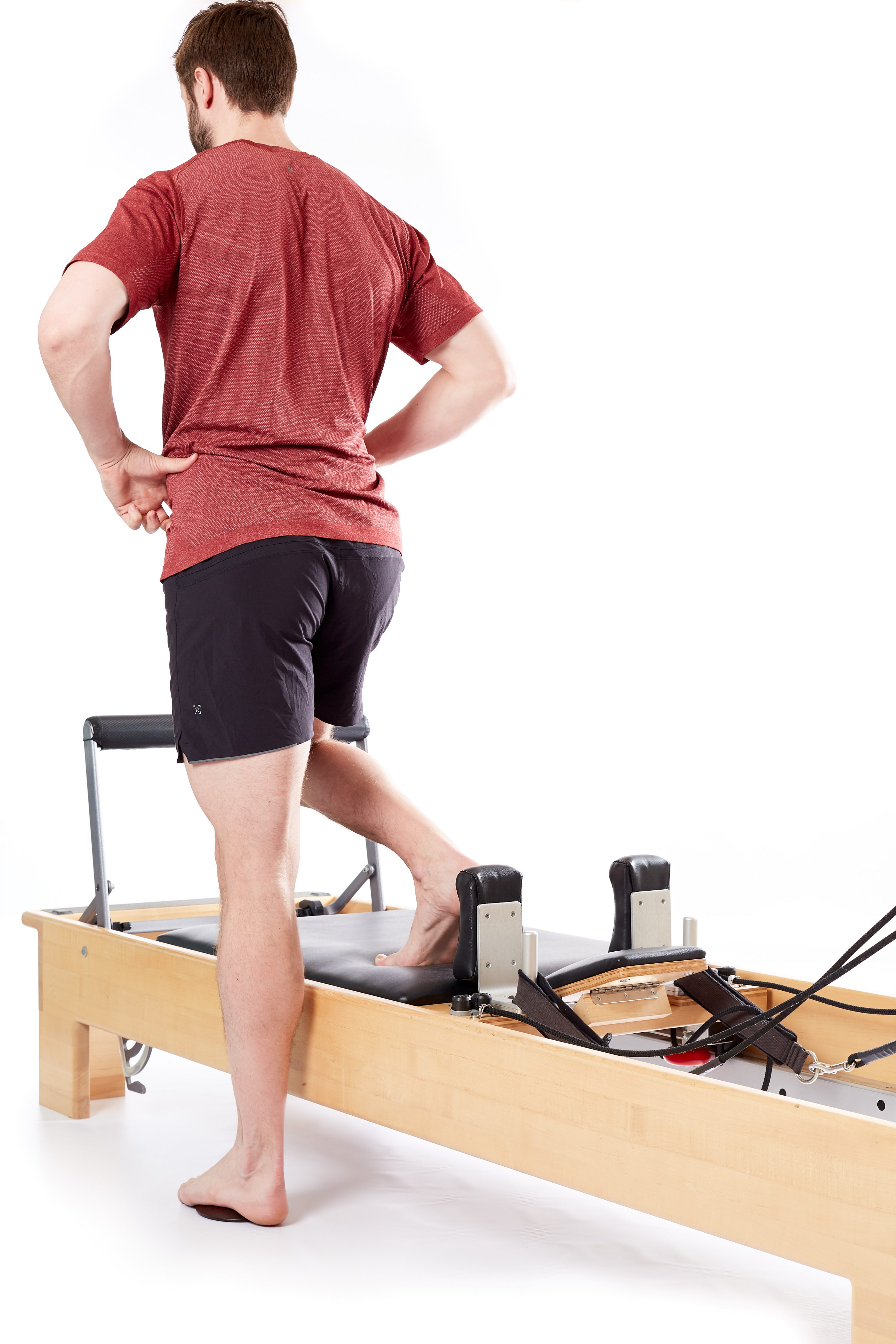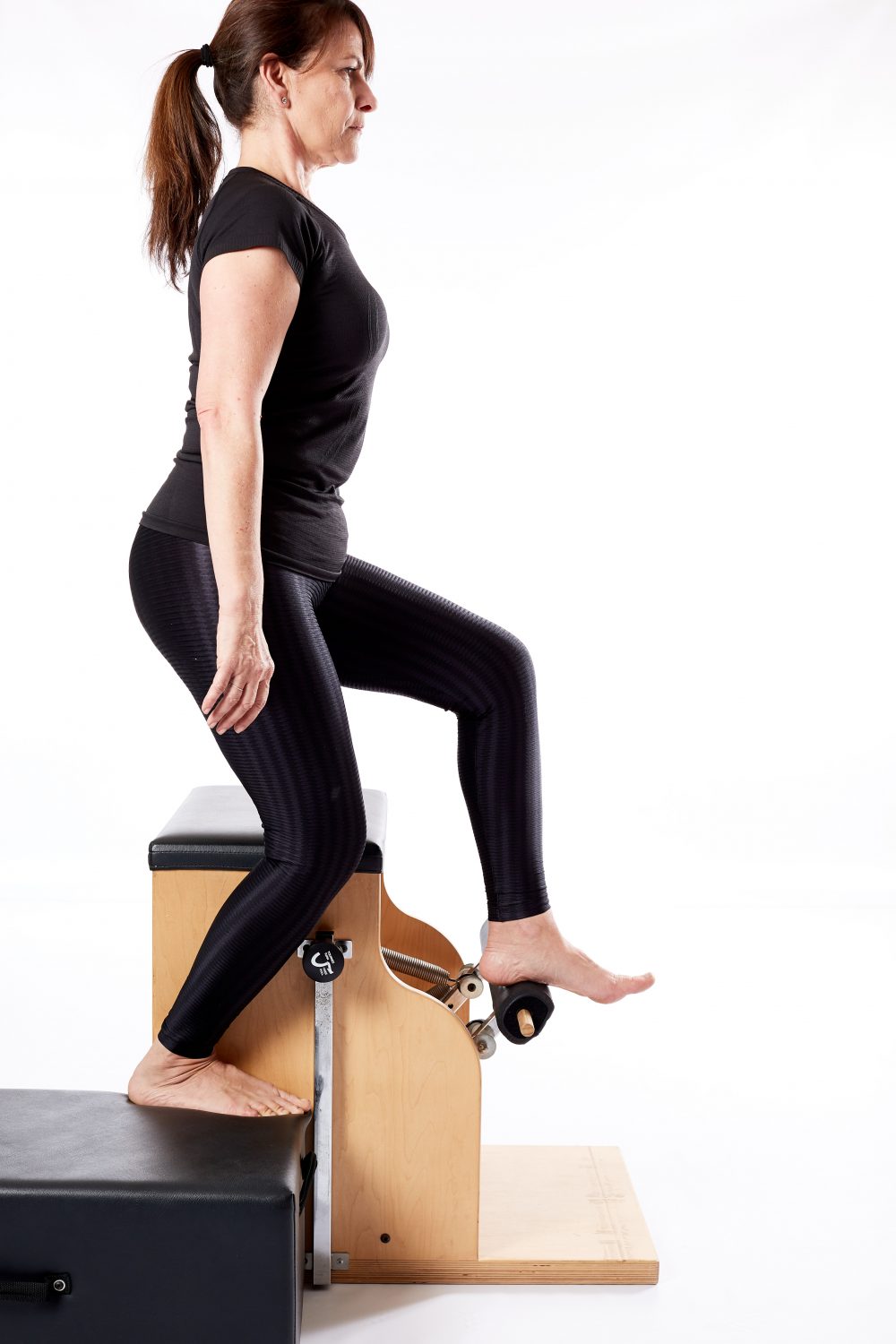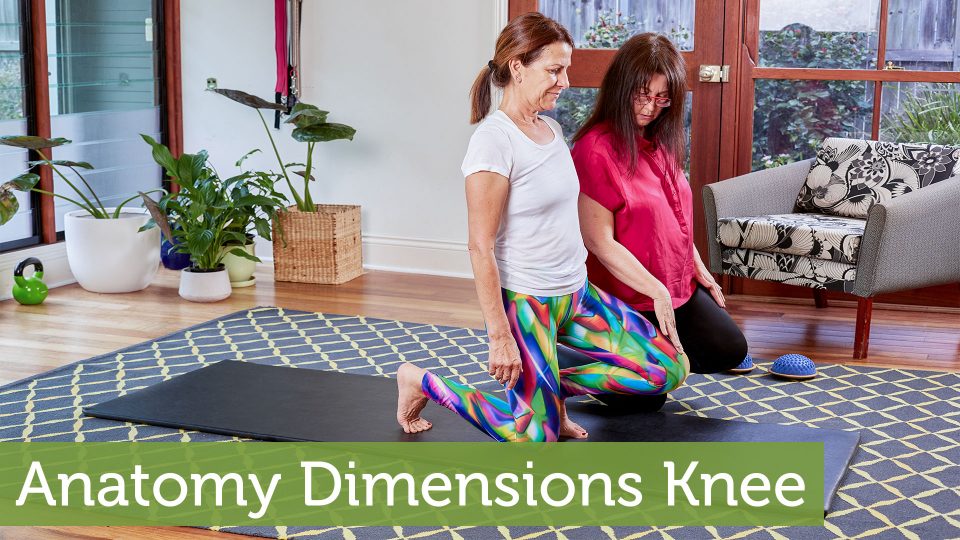Knee replacement exercises for pre and post surgery
Tue,May 28, 2019 at 11:12AM by Carla Mullins
Knee replacement exercises pre and post surgery can be an important factor for successful rehabilitation
Why are knee replacement exercises such an important topic? There were 50,000 knee replacement surgeries in Australia alone in the last year! The most common reason for knee replacements is osteoarthritis, a condition which affects one in nine Australians (AIHW 2018), as well as rheumatoid arthritis, which affects around 2 % of Australians. These figures are quite consistent throughout the Western world, so it is no surprise then that you will already have seen a client with a knee replacement or are likely to see one in the near future. My own mother has had two knee replacements and it was very interesting to see how the protocols for surgery and rehabilitation changed over the time between her surgeries. It was notable that there has been a big shift emphasising pre surgery preparation for the knee replacement and then mobilisation of the knee joint as quickly as possible to improve range of motion of the knee.
In this article we will look at:
// A video on the surgery for a knee replacement, explaining some of the processes and rationale for a knee replacement;
// Exercises and principles of movement to do before the surgery as part of the preparatory work;
// Exercises and principles of movement to do after the surgery and various phases for those exercises:
// Phase 1 period – 2 weeks post surgery when there is a focus on achieving between 65 and 90 degrees of flexion in the knee;
// Phase 2 period – 3 to 6 weeks with a focus on achieving around 115 degree flexion in the knee;
// Phase 3 period – 7 weeks to 4 months, trying to increase flexion to 125 degrees or even 135 degrees in the knee;
// Phase 4 period – 5 months onwards, maintaining range but also addressing the broader gait patterns in the body.
Preparatory exercises prior to knee replacement surgery
Let’s remember that when a person is facing a knee replacement they are going to be in quite a lot of pain from the feeling of bone against bone wearing away. They will be limping and trying to avoid placing any pressure on the affected leg. As a result you will see compensations and problems in their hips, poor glut activation, probably a stuck sacroiliac joint (SIJ) and then let’s throw in some ankle problems as well! It is going to be important to focus on strengthening the muscles of the lower leg whilst appreciating that there are going to be painful limitations affecting the joints which will make squats and lunges problematic. Wedging people so that they are standing on something like a Makarlu Lotus to reduce compression can be very useful.
In many cases their doctors will tell them they have to lose weight, which is a great idea but quite a challenge when you are in so much pain that you can’t even walk.
Some muscle considerations for knee replacement exercises:
// Work on de-loading the knee to give a sense of space in the knee joint. Exercises like the knee traction exercises in the videos below are great for this.
// Strengthen glutes and work on alignment of the lower limbs as best as you can. I like to give people exercises like scooter which will help with the strength of the legs. However, problems can mean that often the foot collapses leading to medial knee pain. To help maintain the foot alignment and knee alignment I place a Makarlu Lotus under the arch of that foot to support them and will at times have the person holding a long stick for balance. The advantage of the stick being that they are able to use it as a support and focus for tracking of that knee (see video below).
// Strengthen arm, shoulder and wrists because after the surgery they will be on crutches.
// Quad and hamstring strengthening is great, but remember that if the angle of the knee is too great in these movements you can cause compression into the affecting bone. If you are doing bridges/pelvic curls place the feet away from the person and maybe even on a box so as to reduce knee joint compression whilst still working on muscle strengthening.

Makarlu hardwood base is used under the foot to support the single leg standing position. The domed surface acts as a wedge to reduce medial collapse of foot and knee. Remember to adjust the person to the height of the Reformer by having them stand on a box or so forth so as to allow optimal knee angle for the person at this stage of the rehab process.
In this exercise you should be using a Makarlu Lotus under the hip, varying the density to your preference.
Phase One: First 2 weeks after the knee replacement
A person will be supervised by a physiotherapist and the focus will be pain and swelling management.
At this stage the physiotherapist will have a number of restrictions on how they work with the client, and it is important for their movement teachers to understand the focus at this stage. The focus will be on:
// Range of Motion (ROM)
// Strengthening exercises
– Quadriceps sets
– Gluteal sets
– Straight leg raises, supine
– Knee extensions supine over a roll or a ball
– Knee extensions from seated
– Passive knee straigtening with a holl supine
– Heel slides, seated and supine
// Functional exercises
– Transfers: laying, sitting. sitting standing.
– Gait training with crutches/ stick , including stairs
– Car transfers (in and out safely)
– Weight bear as tolerated
Phase Two: 3- 6 weeks post knee replacement
The protocols for knee replacement exercises are variable depending on the surgeon, but this is what you could expect to be seeing and would be the focus in this period of time. Pain killers will assist the person through the healing process but could result in balance and dizziness issues, so take care that they do not fall and make things worse. And of course, the potential risk of addiction to painkilling drugs needs to be managed. Practitioners need to be aware of the medications and taper plans.
Some focus ideas for knee replacement exercises include:
// Strengthening exercises
– Isometric quads, hamstrings, glutes, adductors eg Wunda Chair seated leg press, possibly with the person seated on the Caddie and the Wunda Chair facing so as to reduce the angle of the knee compression (see video below)
– Wall standing mini squats
– Wall ball press
– Core stabilising exercises
– Active and assisted range of motion exercises (aggressive – ie physiotherapist pushing and prodding)
– Supported standing heel raises, calf stretches, mini squats, hamstring curls, crab walks
– Hydrotherapy after week 3 (scar healing)
// Functional activities
– Gait – normalise gait between crutches, progressing to a single point stick and unassisted
– Weight-bearing as tolerated, increase endurance with longer walks and stairs
Phase Three: 7- 12 weeks post knee replacement
These protocols are variable depending on the surgeon but this is what you could expect to be seeing and would be the focus in this period of time. This is probably when your client is probably
// Strengthening knee replacement exercises
– Core stabilisation exercises (pilates teachers you have got this!)
– Squats and single leg stance mini-squats
– Resistance exercises for quadriceps, hamstrings, glutes and adductors – think springs and more springs
– Active and assisted ROM exercises (be AGGRESSIVE)
// Functional knee replacement exercises
– Start driving using the affected leg
– Normalise gait pattern
– Balance training: heel-toe walking and other tricks of balance
– Exercise bike (can start earlier if good balance)
– Hydrotherapy
Phase Four: Later stages 5 months and onwards after the knee replacement
The period 5 months after surgery is when a well-trained movement teacher can come into their own and we can do some of the focus work that challenges our creativity in order to encourage greater focus and gait control. Watch the videos below for some ideas.

In this exercise we have used the hardwood Makarlu dome to support the arch of the foot. We have also placed the box next to the Wunda Chair to assist with this step down modification.
The physiotherapists, movement teachers and massage therapists at Body Organics regularly work with clients pre and post knee replacement as part of their recovery plan. The topic of knee replacement exercises is discussed in the Body Organics Education online course Anatomy Dimensions Lower Limb courses. If you are interested in our courses you can email us on education@bodyorganics.com.au for more course information.
To make an appointment with one of our staff please call 07 3892 2002.
As part of our homework plan and exercises, clients will use a variety of equipment including Makarlu Lotus, and they will be given detailed videos (available to all purchasers of Makarlu products) to help them with their specific homework programs.
To work with one of our teachers to improve your knee range and strength you can call us at the studio to make an appointment.
To learn more about Knee replacements and how you can work with clients as a teacher book into our online course Anatomy Dimensions – Knee.

 0
0 